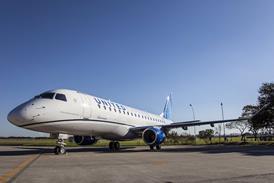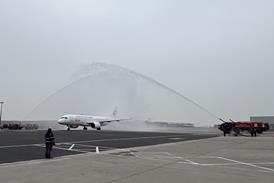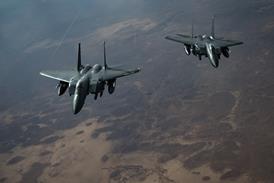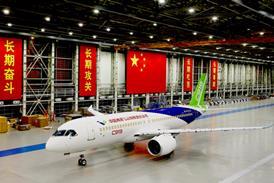Ongoing tests of airline cabin air contamination are in future going to relate the moments of detection of airborne toxins to synchronised information from the aircraft's flight data recorder.
This is to find out if there are circumstances under which such events are more likely to happen, says professor Helen Muir, project manager of the UK Department for Transport-sponsored trials. She says this may provide new understanding of the causes of cabin air contamination events, enabling action to be taken to reduce the risk.
Muir, Cranfield University's professor of human factors and safety, confirms that during the first Boeing 757 flight trial with test equipment on board there was a detected cabin air contamination incident at the top of climb.
She says that incidents reported in airline operations indicate an occurrence rate of 0.05% across all types, but the aircraft most prone have been 757s and BAe 146s.
It is widely accepted in the industry that reported incidents are only a fraction of actual air contamination events, and Muir has pointed out that sometimes pilots could fail to detect the presence of airborne chemicals if they rely on sense of smell alone.
She concedes that one of the problems is that the baseline for what cabin air normally contains has never been established. The Global Cabin Air Quality Executive (GCAQE) says that Muir has been misled, and that the formal results of many tests of normal cabin air have been published.
Muir's team includes Dr Ray Johnston, a senior physician and head of the UK Aviation Health Unit since it was set up by statute in April 2006 and Dr Chris Walton, a biologist at Cranfield who specialises in volatiles analysis.
The early trials were set up to validate the best type of air sampling equipment to employ - a subject that has been controversial with the GCAQE. The executive is worried that the trial's concentration will be on vapours rather than mists and aerosols.
Muir says the chemicals collected during the fume event recorded on a 757 during trials included: "a wide range of volatile and semi-volatile organic compounds including benzene, toluene xylene, trimethyl benzene, napthalene, plus short and long chain aliphatic hydrocarbons including organophosphates."
Now the formal trials are about to be carried out, says Muir, explaining that five airlines have agreed to take part in the tests. The aircraft types will include a cargo and a passenger BAe 146, a cargo and a passenger 757, and an Airbus A321, and each will fly 20 sectors with test equipment and scientific staff on board.
Source: Flight International























